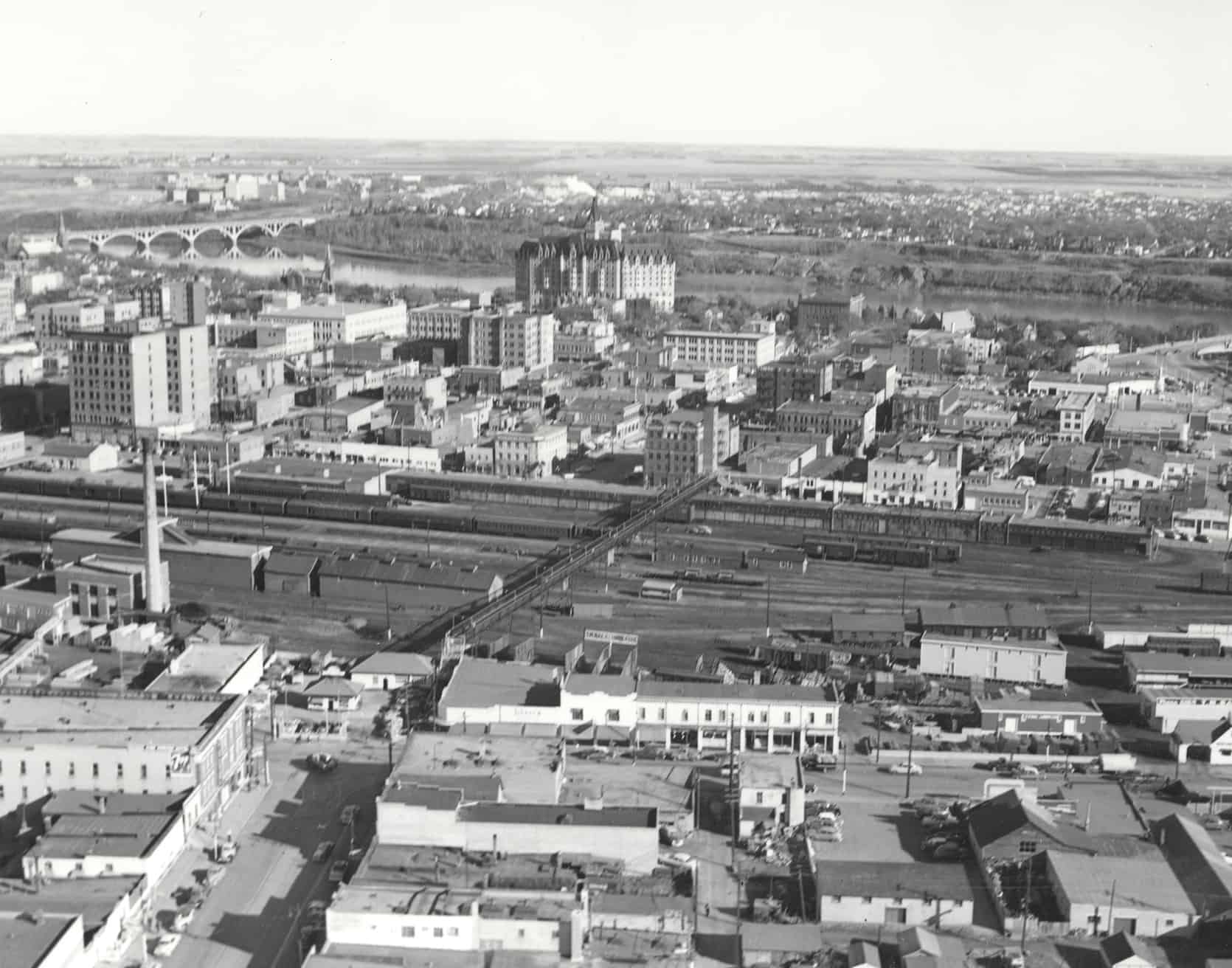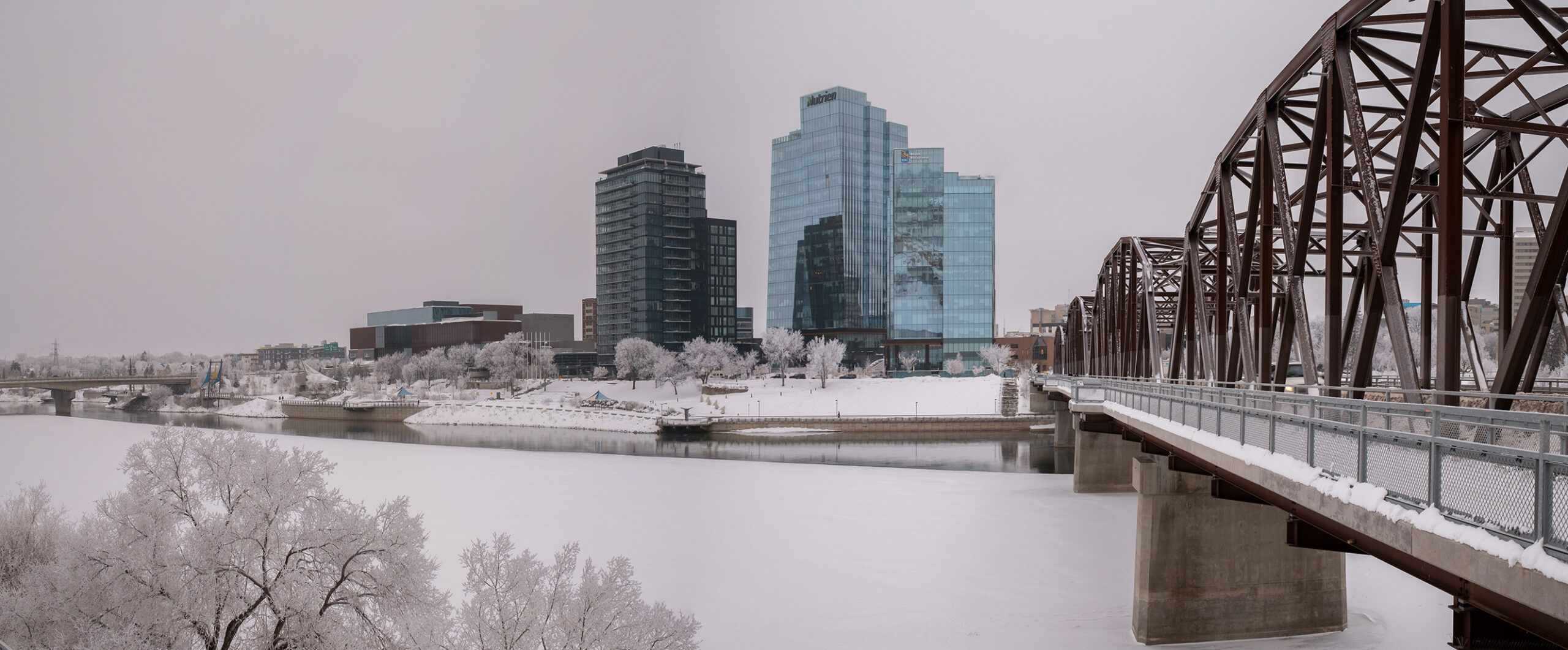
Saskatoon, which is located on Treaty Six Territory and the homeland of the Métis has had people living in and travelling through the area for over 11,000 years. In 1906, with the promise of a traffic bridge and other civic improvements, Riversdale, Nutana, and Saskatoon amalgamated to form a city called Saskatoon, named after a plentiful red berry found along the riverbank and derived from Mis-sask-quah-toomina, the Cree word for this berry.
Downtown Saskatoon, the original location of “Saskatoon” sure has gone through some changes over the years. Let’s take a look back and see how it all began and some of the more defining moments in the district’s history.
All photos were supplied by the Saskatoon Public Library Archives.
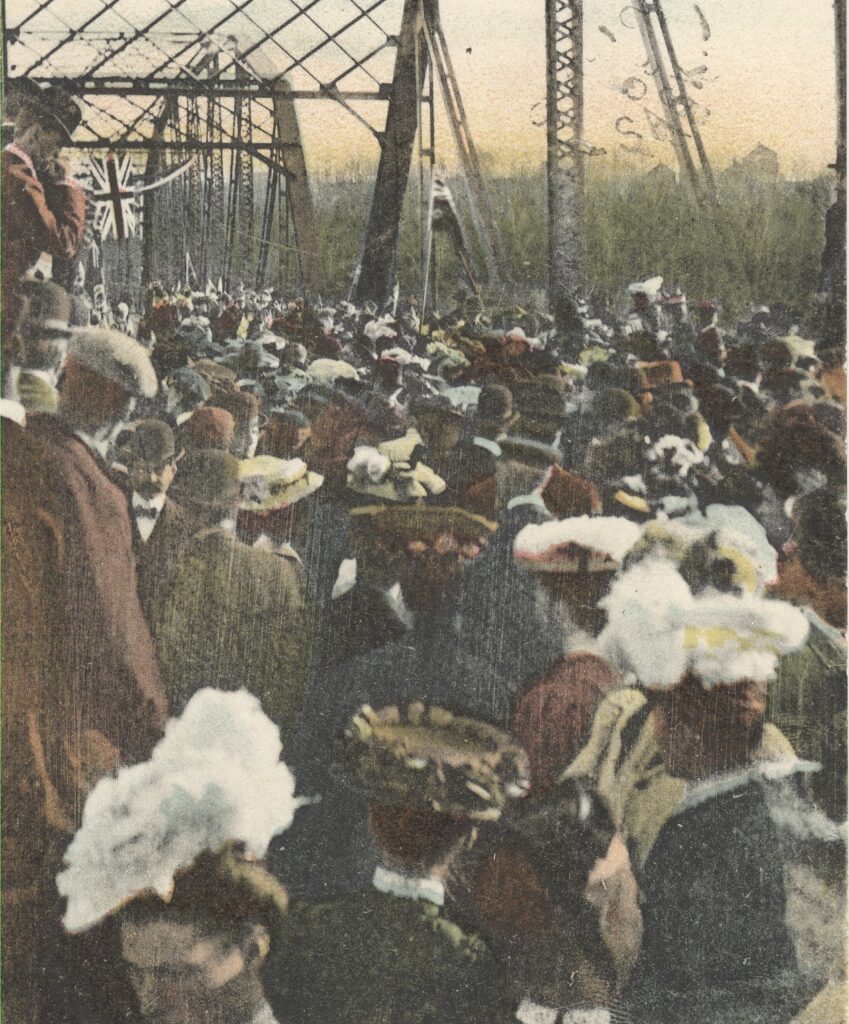
On Oct 10, 1907, the Traffic Bridge officially opened, connecting both sides of the river as was promised with the formation of Saskatoon.

In 1910, the 20th Street footbridge was built over the CN’s Downtown rail yards to provide a pedestrian link between Downtown and Riversdale.

On Dec 5, 1928, the Eaton’s store at 21st St. and 3rd Ave opened. Its Neo-Renaissance style with a Tyndall stone and black marble façade with Palladian windows boasted an equally elaborate interior. Eaton’s operated at this location until 1970 when it moved to the newly built Midtown Plaza.

On Nov 11, 1932, the Broadway Bridge, originally called The Dean’s Bridge, Opened after 11 months of construction.

On Dec 10, 1935, Horace N. Stovin became the first official registered guest at the newly opened Bessborough Hotel.
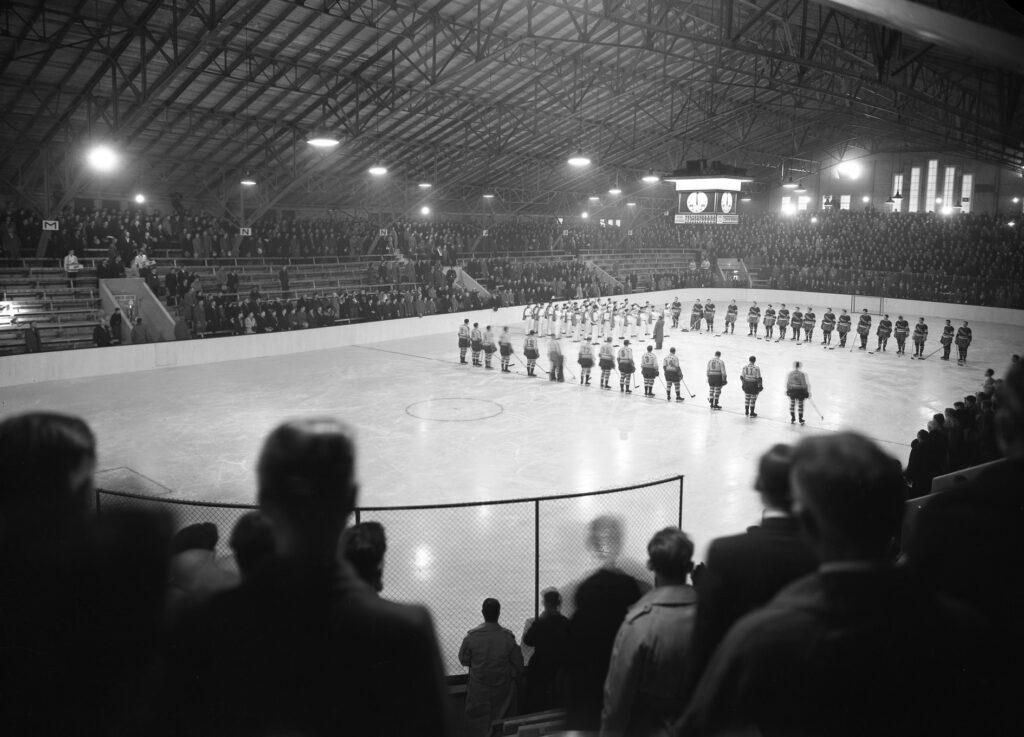
On Oct 30, 1937, The Saskatoon Arena Rink, AKA The Barn, opened on 19th St and 2nd Ave with a sold-out game between the New York Rangers and the New York Americans.
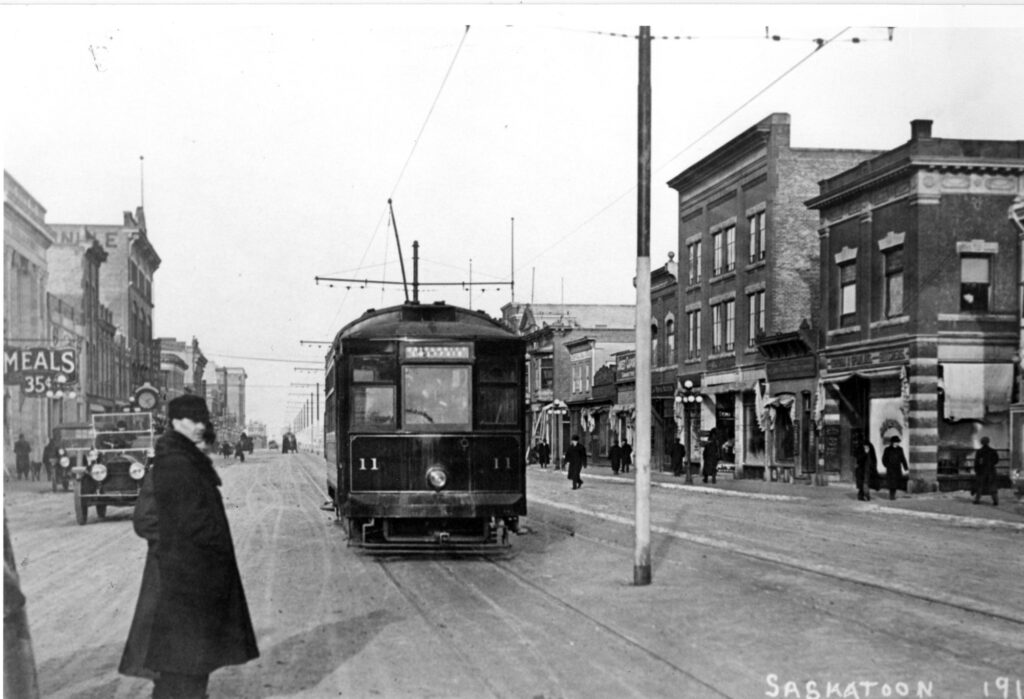
On Nov 10, 1951, the last streetcar made its final run.

In 1963, the City of Saskatoon and the Canadian National Railway signed an agreement for the removal of Downtown rail facilities. This provided space for the construction of Midtown Plaza, Centennial Auditorium (now called TCU Place), and the building of the Sid Buckwold Bridge for cars, replacing a bridge that used to be at that approximate location for trains.

On May 27, 1966, the New Main Library, known as the Frances Morrison Public Library opened on 23rd Street across from City Hall opened.
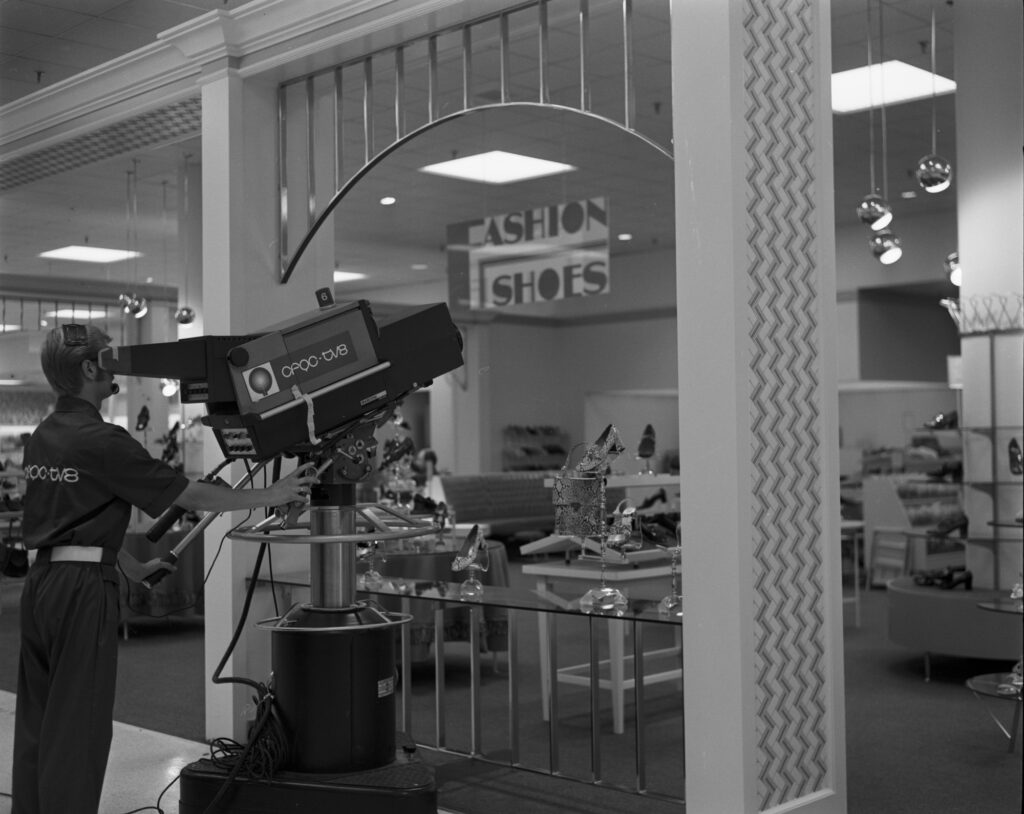
On July 30, 1970, the Midtown Plaza officially opened on the site of the old CNR station at 1st Avenue and 21st Street. Pictured is CFQC on location to celebrate the grand opening.
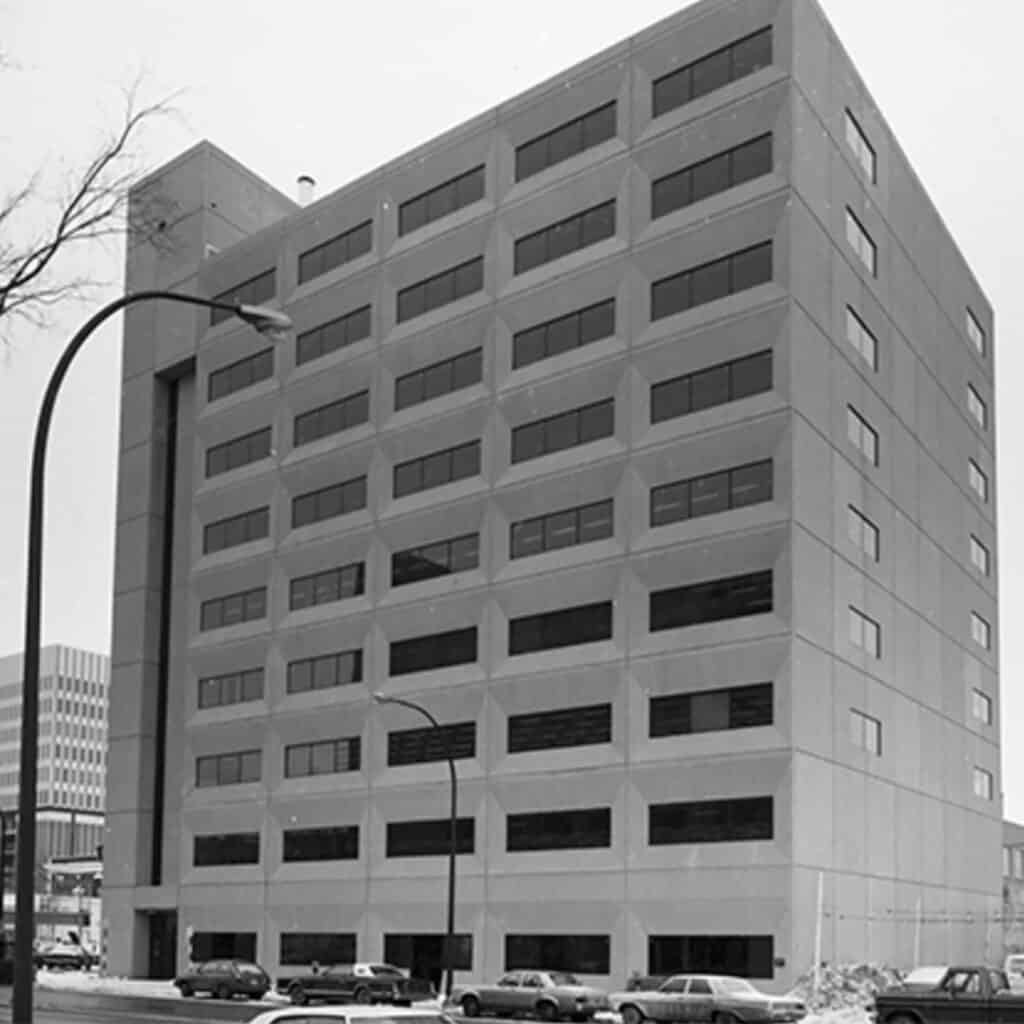
In 1997 the Yellow Quill First Nation purchased the Canterbury Towers building which became the First Nations Bank of Canada, a chartered bank primarily focused on providing financial services to the Indigenous marketplace in Canada.

